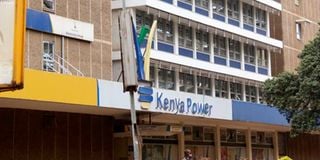Premium
Kenya Power marked for Sh41bn World Bank loan

A Kenya Power building along Aga Khan Walk, Nairobi. The World Bank plans a Sh40.84 billion ($ 300 million) loan to help improve the operations of KPLC and improve the supply of electricity at the grassroots through the Last Mile Connectivity (LMC) programme.
The World Bank plans a Sh40.84 billion ($300 million) loan to help improve the operations of the Kenya Power and Lighting Company (KPLC) and improve the supply of electricity at the grassroots through the Last Mile Connectivity (LMC) programme.
The multilateral lender said in a disclosure that funding would come through The International Development Association (IDA) which is a member of the World Bank Group and offers concessional loans and grants to the world's poorest developing countries.
The debt will support Kenya’s goals of achieving universal access to electricity and clean energy by 2030, through a multi-phase programmatic approach (MPA) that allows flexibility in the application of a variety of financing instruments.
“The first phase of the MPA, through the GREEN programme, is proposed as a Program for Results (PforR) with US$300 million(Sh40.84billion) of IDA focusing on improvements in sector planning, governance, financial sustainability and operational efficiency of KPLC, and an improved last mile programme focusing on better targeting of last mile areas,” the World Bank said.
The lender said phase one of the MPA will focus on improving the financial viability of KPLC to sustainably underpin a return to faster connections rollout toward universal access and will be measured by indicators related to access to electricity by households, KPLC revenue shortfalls, and system losses.
Cheaper, cleaner imports
The second phase of the programme is focused on increasing cheaper and cleaner imports from Ethiopia through supporting grid stability equipment which will help increase the share of renewable energy in the generation mix and reduce the cost of supply.
“Phase 3 will aim to support increasing private sector participation in renewable energy through supporting a solar auction and invest in shared infrastructure (solar parks) in addition to supporting transmission and distribution investments for increasing access to electricity,” the World Bank said adding that the fourth phase of the programme will continue with the priority transmission and distribution investments to help achieve the goal of universal access to electricity.
The connection campaign under the LMC programme saw Kenya add more than a million new connections per year between 2015 and 2019, more than doubling its connection base from 3.2 million in 2015 to over 8 million today.





